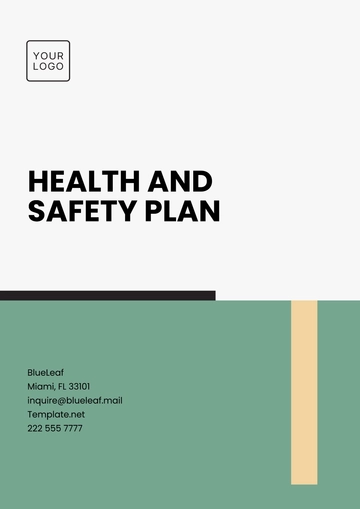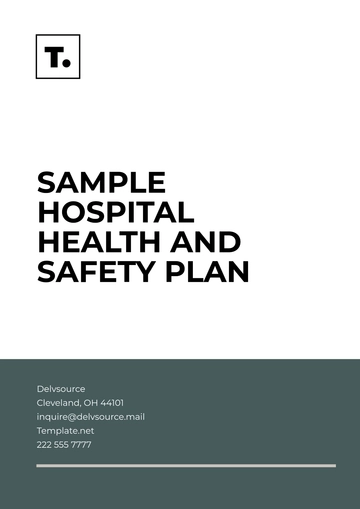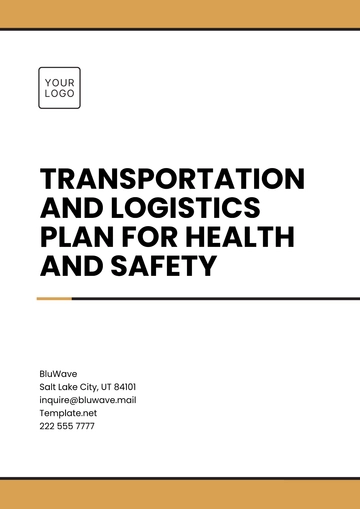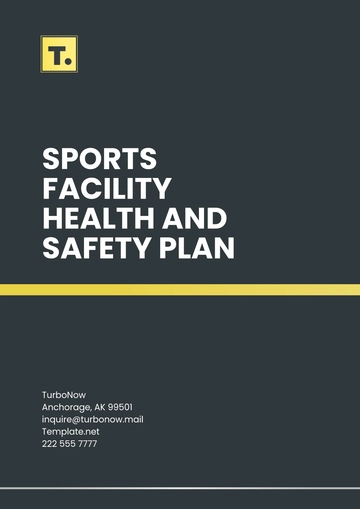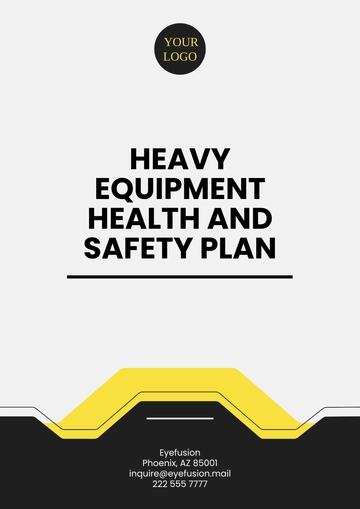Free Excavation Safety Plan

_________________________________________________________________________________
Prepared By: [Your Name]
Company: [Your Company Name]
1. Introduction
Excavation activities, essential for construction, civil engineering, and other projects, pose significant risks to workers if not conducted with proper safety measures. This Excavation Safety Plan outlines the procedures, responsibilities, and practices designed to protect personnel, equipment, and the surrounding environment during excavation work.
2. Objectives
To ensure the safety of workers involved in excavation activities.
To comply with applicable regulations and industry standards.
To minimize the risk of accidents and injuries.
To establish clear roles and responsibilities for all personnel involved.
3. Scope
This plan applies to all excavation projects undertaken by [Your Company Name]. It covers activities related to digging, trenching, and any related operations.
4. Roles and Responsibilities
Role | Responsibilities |
|---|---|
Site Manager | The Site Manager oversees all excavation activities, ensures compliance with safety regulations, and conducts regular safety inspections. |
Excavation Supervisor | The Excavation Supervisor is responsible for implementing the Excavation Safety Plan, conducting pre-excavation safety meetings, and monitoring site conditions and worker compliance. |
Safety Officer | The Safety Officer provides safety training to workers, conducts risk assessments and hazard analyses, and investigates incidents to recommend corrective actions. |
Workers | Workers are required to attend safety training sessions, follow safety protocols and guidelines, and report any unsafe conditions or behaviors to supervisors. |
5. Risk Assessment and Hazard Identification
5.1 Common Hazards
Cave-ins or collapses.
Falling objects.
Utility strikes (gas, electricity, water).
Slips, trips, and falls.
5.2 Risk Assessment Process
Conduct a site-specific hazard assessment before commencing excavation activities.
Identify potential hazards and evaluate the level of risk.
Develop control measures to mitigate identified risks.
6. Control Measures
6.1 Site Preparation
Mark Utility Lines: Contact utility companies to mark underground lines before excavation begins.
Barricades and Signage: Use barriers and clear signage to restrict access to excavation sites.
6.2 Trenching and Excavation Techniques
Slope and Shore: Employ proper sloping or shoring techniques based on the depth and type of soil.
Monitoring: Regularly monitor the excavation site for signs of instability.
6.3 Personal Protective Equipment (PPE)
Ensure workers wear appropriate PPE, including hard hats, steel-toed boots, gloves, and high-visibility clothing.
Provide respiratory protection if required.
7. Emergency Procedures
7.1 Emergency Response Plan
Emergency Contacts: Maintain a list of emergency contacts, including local emergency services, medical facilities, and company management.
Emergency Evacuation: Develop and communicate an evacuation plan specific to the excavation site.
First Aid: Ensure first aid kits are readily available and personnel are trained in basic first aid.
7.2 Incident Reporting
All incidents, near misses, or injuries must be reported to the Excavation Supervisor immediately.
Conduct a post-incident analysis to identify causes and improve future safety measures.
8. Training and Communication
8.1 Safety Training
Provide comprehensive safety training to all workers before commencing excavation activities.
Conduct regular refresher courses and drills to reinforce safety protocols.
8.2 Communication
Hold daily briefings to discuss safety issues, updates, and work progress.
Encourage open communication regarding safety concerns.
9. Monitoring and Review
9.1 Inspections
Conduct regular inspections of excavation sites to ensure compliance with safety standards.
Document findings and corrective actions taken.
9.2 Plan Review
Review and update the Excavation Safety Plan annually or whenever significant changes occur on the project.
10. Conclusion
The safety of workers during excavation activities is paramount. By following this Excavation Safety Plan and adhering to established safety protocols, the organization aims to create a safe working environment that minimizes risks and protects personnel and assets.
- 100% Customizable, free editor
- Access 1 Million+ Templates, photo’s & graphics
- Download or share as a template
- Click and replace photos, graphics, text, backgrounds
- Resize, crop, AI write & more
- Access advanced editor
Introducing the Excavation Safety Plan Template from Template.net! Crafted for utmost convenience, this editable and customizable template ensures seamless adaptation to your project needs. With the added advantage of being editable in our Ai Editor too, prioritize safety effortlessly. Elevate your excavation endeavors with ease and precision today!
You may also like
- Finance Plan
- Construction Plan
- Sales Plan
- Development Plan
- Career Plan
- Budget Plan
- HR Plan
- Education Plan
- Transition Plan
- Work Plan
- Training Plan
- Communication Plan
- Operation Plan
- Health And Safety Plan
- Strategy Plan
- Professional Development Plan
- Advertising Plan
- Risk Management Plan
- Restaurant Plan
- School Plan
- Nursing Home Patient Care Plan
- Nursing Care Plan
- Plan Event
- Startup Plan
- Social Media Plan
- Staffing Plan
- Annual Plan
- Content Plan
- Payment Plan
- Implementation Plan
- Hotel Plan
- Workout Plan
- Accounting Plan
- Campaign Plan
- Essay Plan
- 30 60 90 Day Plan
- Research Plan
- Recruitment Plan
- 90 Day Plan
- Quarterly Plan
- Emergency Plan
- 5 Year Plan
- Gym Plan
- Personal Plan
- IT and Software Plan
- Treatment Plan
- Real Estate Plan
- Law Firm Plan
- Healthcare Plan
- Improvement Plan
- Media Plan
- 5 Year Business Plan
- Learning Plan
- Marketing Campaign Plan
- Travel Agency Plan
- Cleaning Services Plan
- Interior Design Plan
- Performance Plan
- PR Plan
- Birth Plan
- Life Plan
- SEO Plan
- Disaster Recovery Plan
- Continuity Plan
- Launch Plan
- Legal Plan
- Behavior Plan
- Performance Improvement Plan
- Salon Plan
- Security Plan
- Security Management Plan
- Employee Development Plan
- Quality Plan
- Service Improvement Plan
- Growth Plan
- Incident Response Plan
- Basketball Plan
- Emergency Action Plan
- Product Launch Plan
- Spa Plan
- Employee Training Plan
- Data Analysis Plan
- Employee Action Plan
- Territory Plan
- Audit Plan
- Classroom Plan
- Activity Plan
- Parenting Plan
- Care Plan
- Project Execution Plan
- Exercise Plan
- Internship Plan
- Software Development Plan
- Continuous Improvement Plan
- Leave Plan
- 90 Day Sales Plan
- Advertising Agency Plan
- Employee Transition Plan
- Smart Action Plan
- Workplace Safety Plan
- Behavior Change Plan
- Contingency Plan
- Continuity of Operations Plan
- Health Plan
- Quality Control Plan
- Self Plan
- Sports Development Plan
- Change Management Plan
- Ecommerce Plan
- Personal Financial Plan
- Process Improvement Plan
- 30-60-90 Day Sales Plan
- Crisis Management Plan
- Engagement Plan
- Execution Plan
- Pandemic Plan
- Quality Assurance Plan
- Service Continuity Plan
- Agile Project Plan
- Fundraising Plan
- Job Transition Plan
- Asset Maintenance Plan
- Maintenance Plan
- Software Test Plan
- Staff Training and Development Plan
- 3 Year Plan
- Brand Activation Plan
- Release Plan
- Resource Plan
- Risk Mitigation Plan
- Teacher Plan
- 30 60 90 Day Plan for New Manager
- Food Safety Plan
- Food Truck Plan
- Hiring Plan
- Quality Management Plan
- Wellness Plan
- Behavior Intervention Plan
- Bonus Plan
- Investment Plan
- Maternity Leave Plan
- Pandemic Response Plan
- Succession Planning
- Coaching Plan
- Configuration Management Plan
- Remote Work Plan
- Self Care Plan
- Teaching Plan
- 100-Day Plan
- HACCP Plan
- Student Plan
- Sustainability Plan
- 30 60 90 Day Plan for Interview
- Access Plan
- Site Specific Safety Plan
